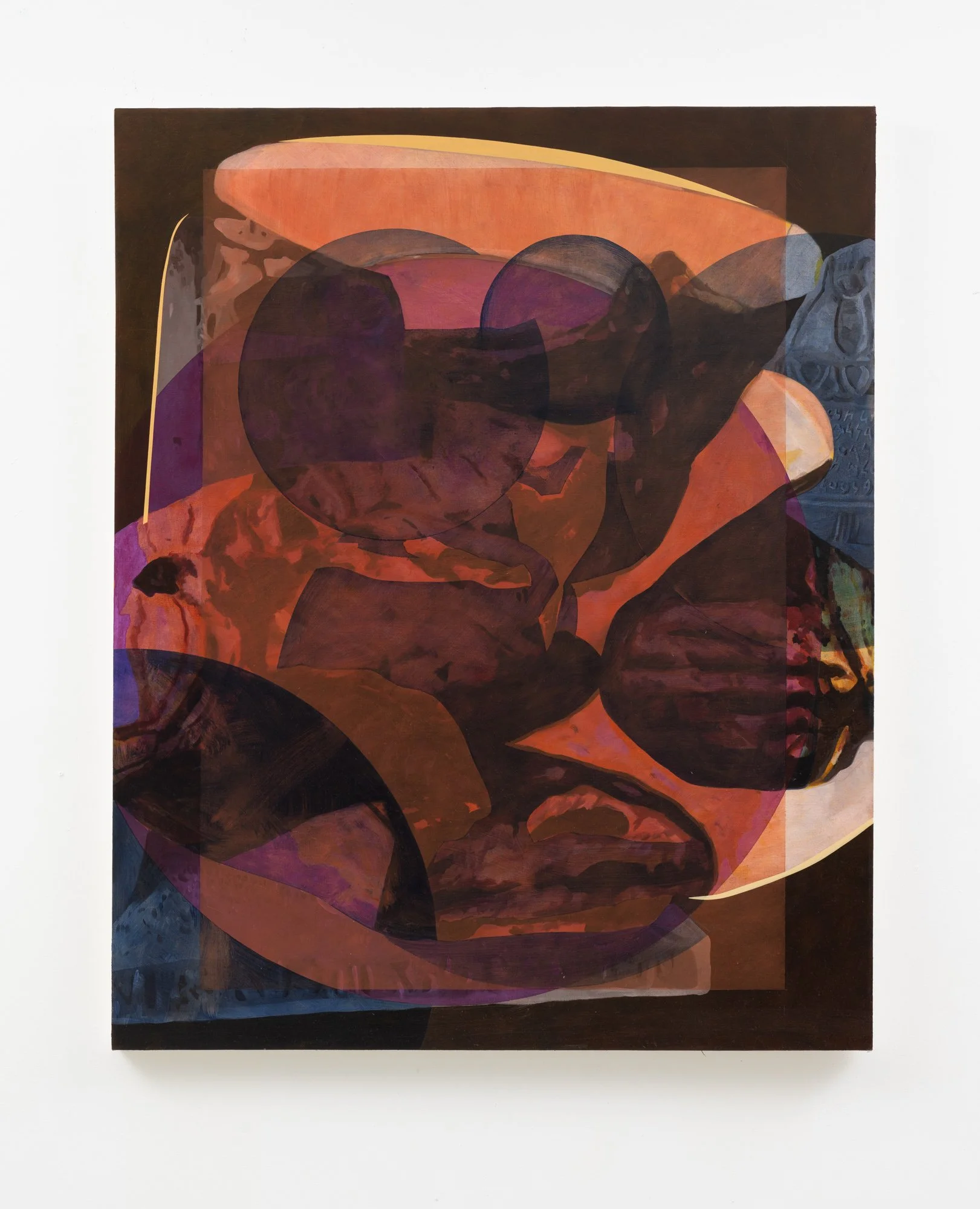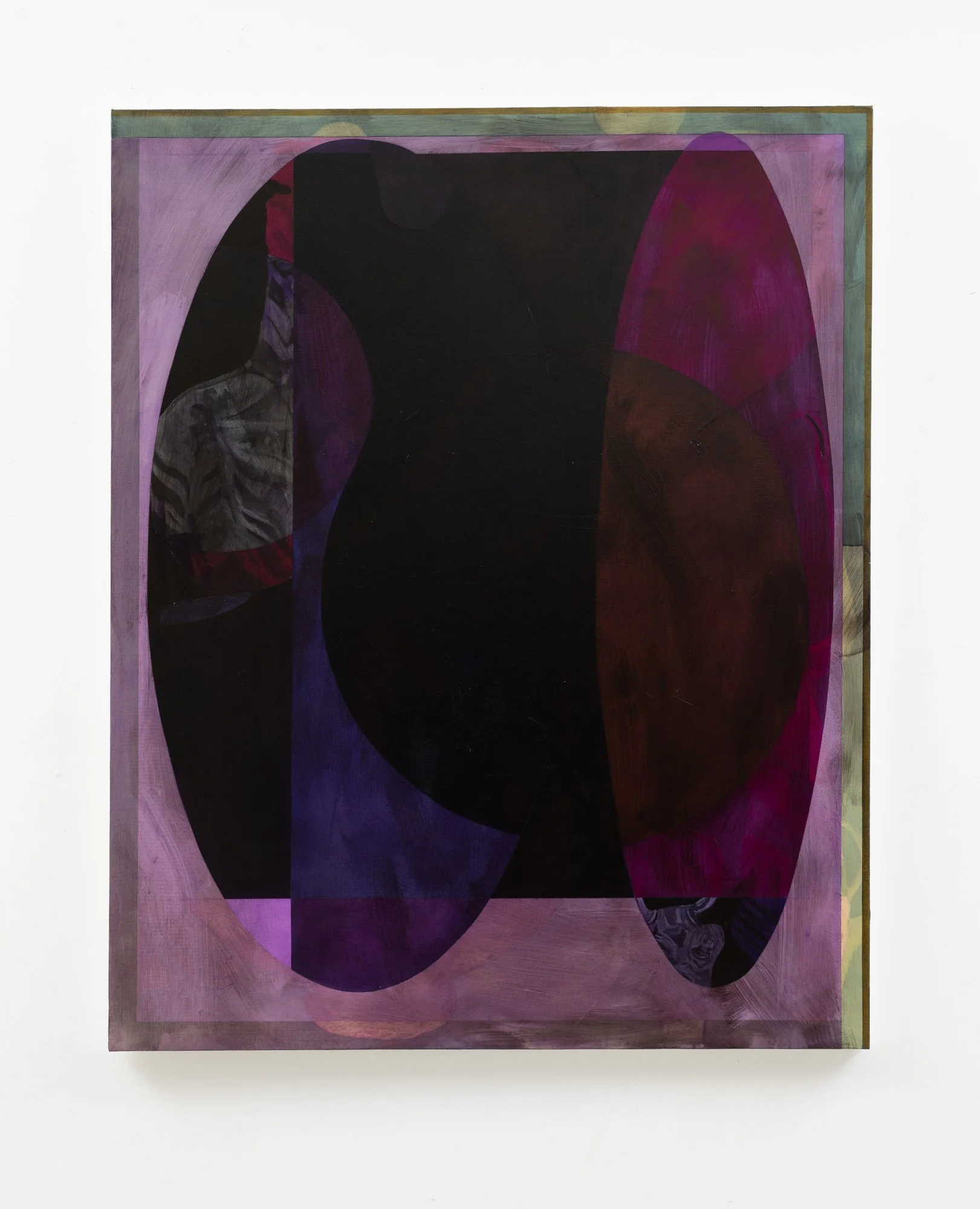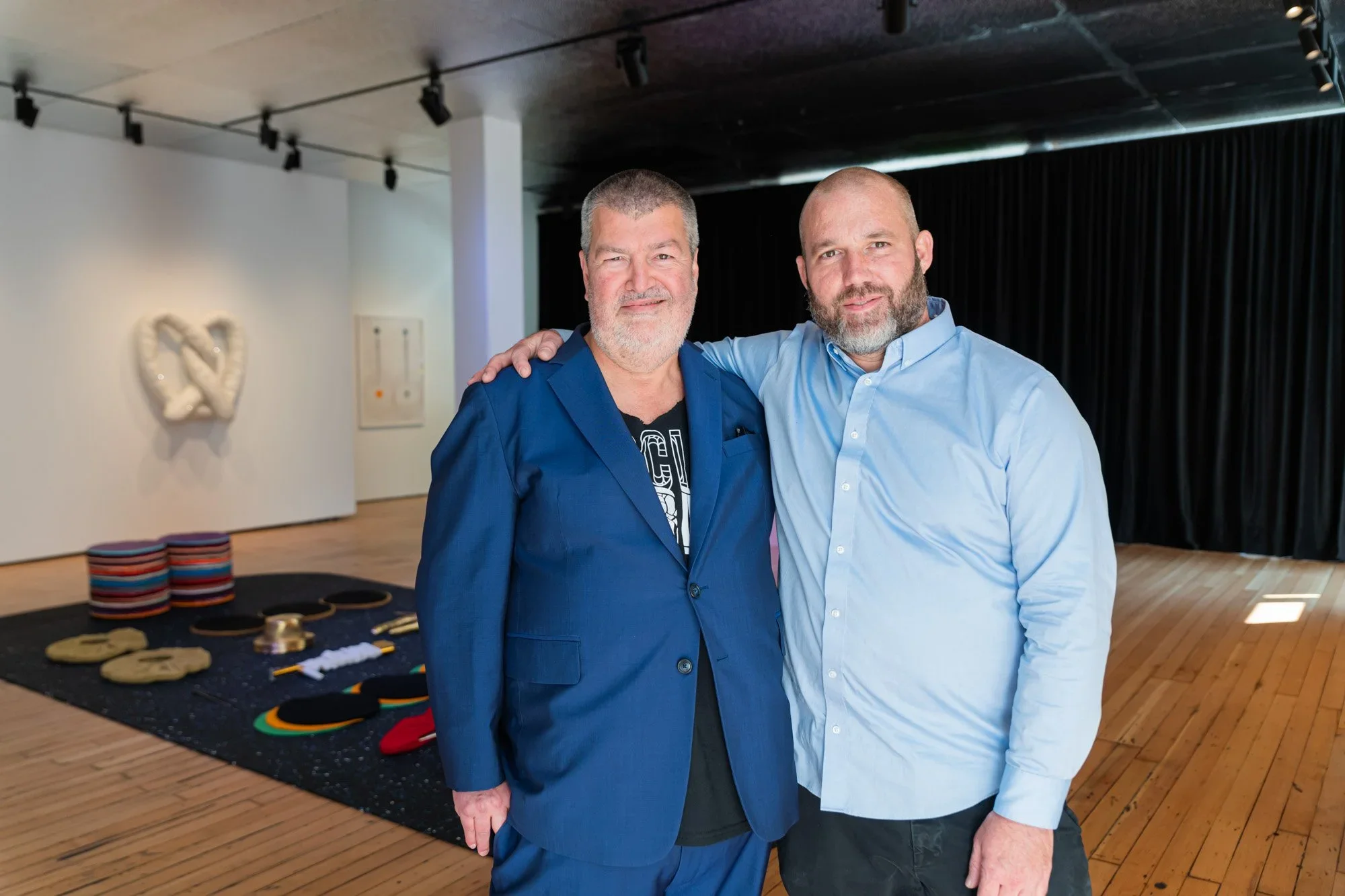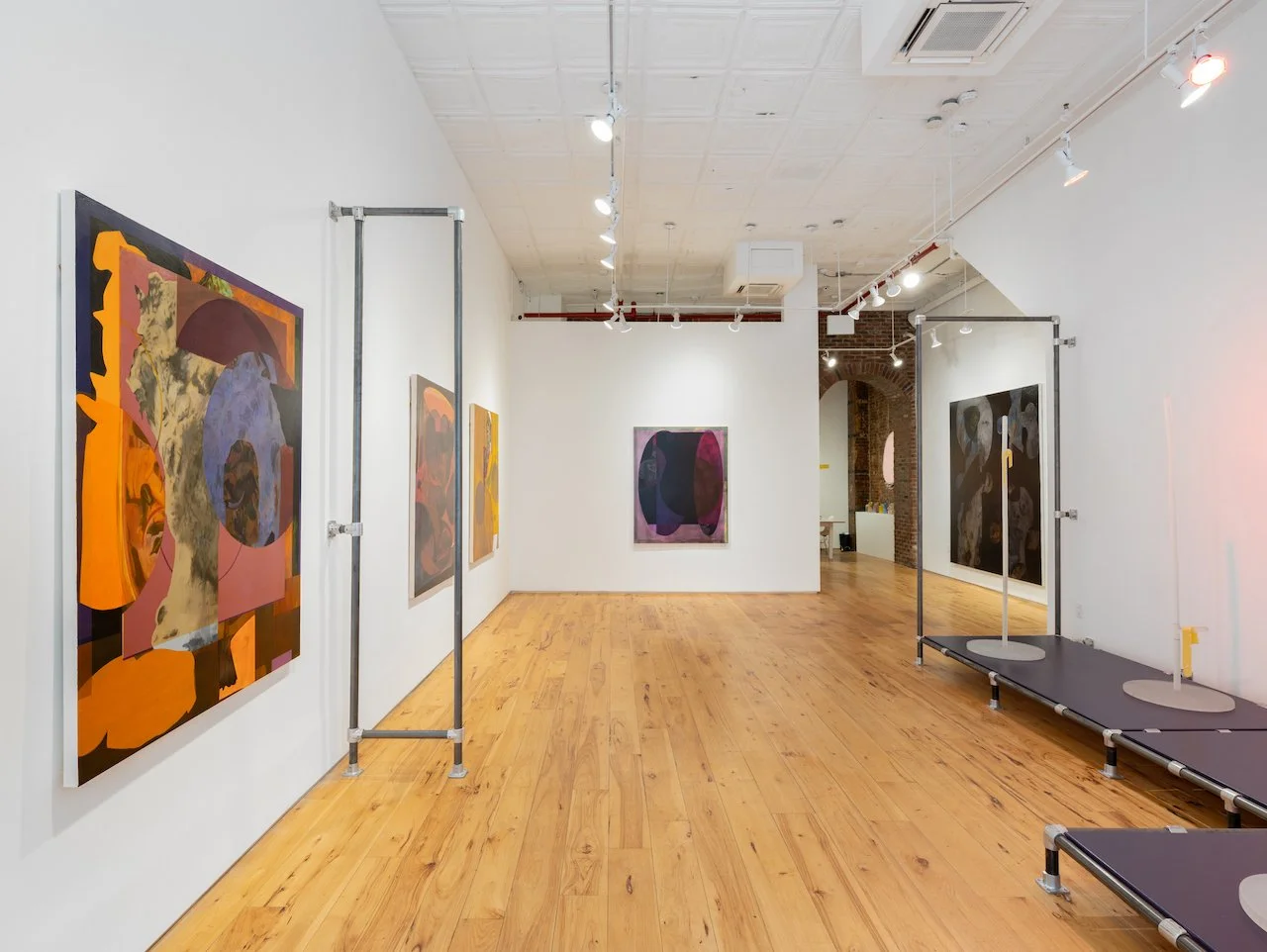Hot Coffee Conversation with artist Derek Franklin
Published Tuesday, October 7, 2025
As part of this platform, I feel strongly about supporting artists and arts professionals from the most diverse geographical settings. Based in Portland, Oregon, Derek Frankin is one of them and currently has a show at Freigh+Volume Gallery in TriBeCa.So we corresponded about his artistic and curatorial visions via email. Derek Franklin (b.1981, Helens, OR) lives and works in Portland, OR. Franklin holds an MFA from Mason Gross School of Art at Rutgers University and a BFA from Pacific Northwest College of Art. He is the former Director of Soloway Gallery, an artist-run space in Brooklyn, NY, and is currently the Artistic Director of Converge 45 and Founder of SE Cooper Contemporary in Portland, Oregon, while concurrently maintaining his own full-time studio practice.
Nina: Imagine you are in your favorite coffee or tea spot. Where is it? What are you drinking? What are the three things you see right now?
Derek Frankin: Most of my coffee drinking is at home, which is my favorite coffee spot. There is a little patio off the gallery that is the ideal location to consume dark roast French press with a splash of milk. There are espresso drinks that I enjoy, but the French press is attuned to my body, and this symbiotic relationship is just right to kick off the morning while looking off at the large apple tree with a million holes around the trunk from woodpeckers, and in the late summer and fall, doe deer bring their fawns to eat windfallen apples most of the day. There is a unique opportunity to really think in this place while observing what is taking place around me, which feels expansive and helpful to me as a human.
Derek Franklin, TOS (Theater of Survival) #45, 2025. Oil on canvas, 50 x 62 in | 127 x 157.48 cm. Courtesy the artist. Photo by Mario Gallucci
Nina: Please tell us more about your current show, titled The Shadows That Haunt the Rooms Behind Our Eyes, at Fright+Volume in Tribeca. What is the main connective theme of these works? Why did you choose this specific format?
DF: The current exhibition consists of large and mid-sized paintings and a sculptural installation. The sculptural installation is isolated to a stage I constructed out of structural pipe, speed fittings, and plywood that is painted in a deep purple. The stage is in an L shape, slightly off two walls. Upon the platform are three unique glass sculptures that resemble full-sized coat racks with a little more gesture or weight added to them by the gravity of life. Two of these have large Swiss cheese slices hanging from them that were cut in the shape of my own hands. In the center of the stage is a handmade wooden spoon created by Jonathan Snyder, placed on a 3” circle of cheese. There are also two small-scale oil paintings on linen that are framed in concrete. Like the paintings in the exhibition, this installation creates a mise-en-scène of a possible domestic still life exasperated by the piercing nature of late capitalism, surveillance, and imperceptibility of everyday life we must manage. In our search for connection and intimacy in our dwindling safety, I think the show really comes down to the constant looking and being looked at that we endure today. A kind of questioning of inanimate objects and what they also witness and record in society, and how we want to connect and build intimacy and care with the people we love, both living here and in the beyond. This is all presented in the aesthetics of the theater, putting the viewer inside, moving in, out, and around the work or the episode at hand.
Derek Franklin, TOS (Theater of Survival) #47, 2025. Oil on canvas, 50 x 62 in | 127 x 157.48 cm. Courtesy the artist. Photo by Mario Gallucci.
Nina: In addition to being a practicing artist, you are Artistic Director of Converge 45, an art triennial in Portland, Oregon. What is the history behind this triennial, and what do you consider to be your mission as its Artistic Director?
DF: Converge 45 was founded in 2016. The first iteration was organized by Kristi Edmonds, and the second was by Lisa Dent. This program never really came to completion because of Covid-19, and the organization came back after the pandemic with its most expansive and successful edition in 2023, where I was the artistic director and Christian Viveros Faune was the curator. This exhibition, titled Social Forms: Art as Global Citizenship, spanned the Portland metropolitan area with 18 sites, 19 exhibitions, and 61 artists participated, and there were over 30 public programs. Since Converge 45 is an itinerant organization with no brick-and-mortar space, we rely on cultural partners to present and support exhibitions. As the Artistic Director, it is my mission to foster and support connection and exchange. I must listen a lot to create bridges for artists, writers, and curators to meet, feel comfortable, and have lasting discourses beyond Converge 45. Once these relationships are established, you can begin to introduce the community of supporters and audiences into the experience, and it is much more meaningful to everyone involved because of a vested interest and exchange. If you are successful, these relationships live on beyond the project, the party, the dinner, or the opening and build new possibilities.
Christian Viveros-Fauné and Derek Franklin. Photo by Mario Gallucci. Courtesy of Converge 45.
Nina: You are also instrumental in the exhibition space SE Cooper Contemporary in Portland. How did this space come about, and where do you see the future of artist-run spaces in this uncertain cultural landscape of the United States?
DF: SE Cooper Contemporary was established in 2021 as a space in which artists come, stay, put on exhibitions, and engage in the community. The Gallery is located mostly in a 500-square-foot stand-alone building on 1.3 acres in SE Portland, just south of the Johnson Creek Floodplain on a property where my family also lives. It was designed specifically for housing art exhibitions in this uniquely rural environment located in an urban setting.
SE Cooper uses a range of anarchist epistemologies to decentralize the space from major centers, change the types of neighborhoods and sites in which art is viewed, and seeks to form a more communal atmosphere for participation and communication. It is intended to be restorative to the artists we work with and the community we serve, while developing discourse around future possibilities. SE Cooper Contemporary supports the work of artists looking toward the internal spaces of our everyday lives to create work and ideas that become forms of resistance to our external world of violence. It also seeks to normalize viewing contemporary art and creativity in spaces that include multigenerational families, children, in a safe and welcoming environment.
It is no secret that there is a lot lacking in the current gallery and exhibition structure available to artists today. Here, artists encounter pressure from the market, anxious dealers, financial burdens, and a deteriorating art criticism structure that are all difficult to carry. Success is met with even higher pressures and expedited timelines that chase optimizing possible profit over long-term growth and building cultural value. Artists also find themselves caught in a system where discourse and community with other artists are left behind for a lonely existence as artist, producer, curator, sales director, and logistic coordinator or their own career. I think artist-run spaces give artists the time and space to experiment more, collaborate, and re-engage with curiosity and conversation around what is possible in contemporary art.
Installation view of “Fawn Krieger: Rebus Principle, October 30th through December 5th 2021” at SE Cooper Contemporary in Portland.
Nina: What is the most exciting upcoming project for you in 2025 in any of these diverse cultural capacities?
DF: As the close of 2025 comes near, I am really ramping up work on the 2026 city-wide triennial in Portland that I am working on with Converge 45 and the curator Lumi Tan. This exhibition will be housed in over 15 sites across the city and highlight commissions of both local and international artists. Within this expansive project, the presentation of Seattle-based artist Rob Rhee at SE Cooper Contemporary is one of the most exciting for me, probably because it will be housed at my gallery. We have been working together to expand his practice out of the gallery into living production in the yard and at a local farm just down the street. Rhee’s experimentation with the form of gourds and the possibility of speculative quasi-science around them are remarkably curious. The innovative potential of failure that comes from the “what if” commitment to a crackpot idea is really inspiring.
Installation view, The Shadows That Haunt the Rooms Behind Our Eyes, at Fright+Volume, September 6 – October 11, 2025. Photo courtesy of Adam Reich.





